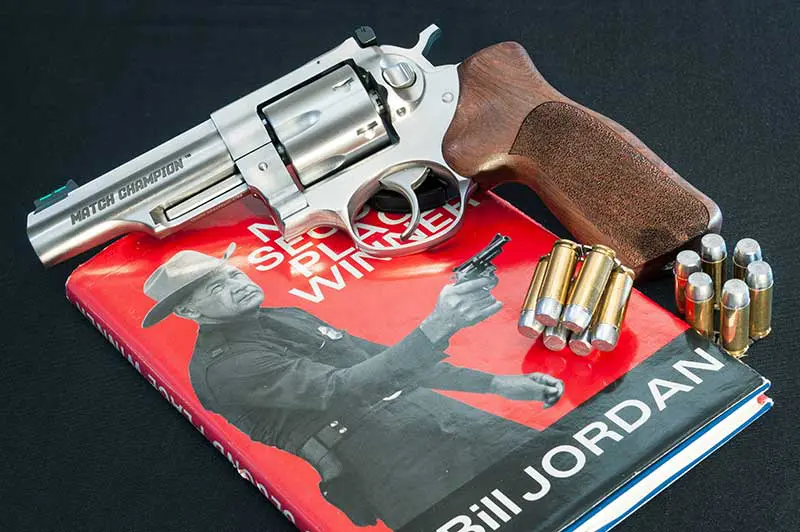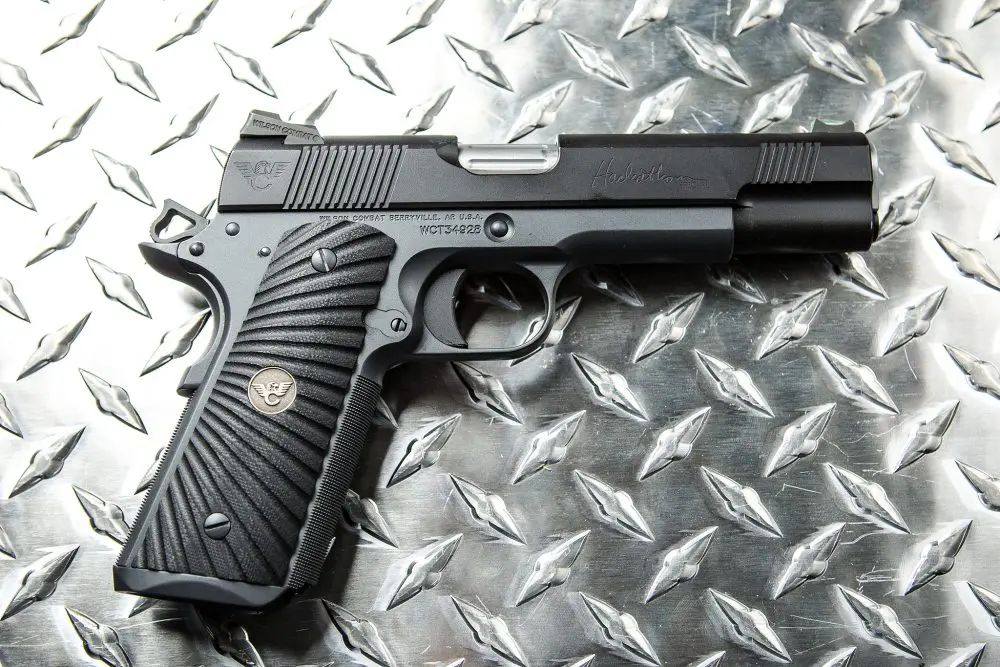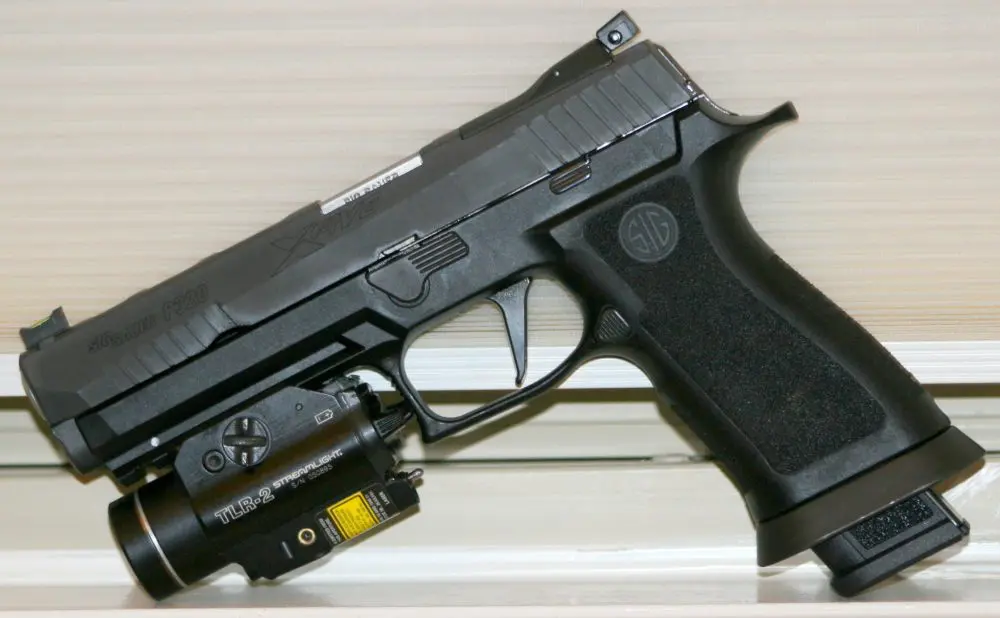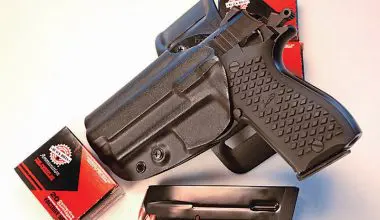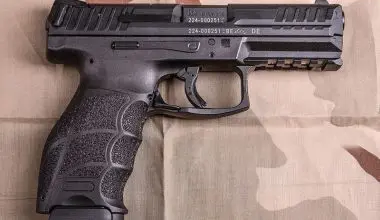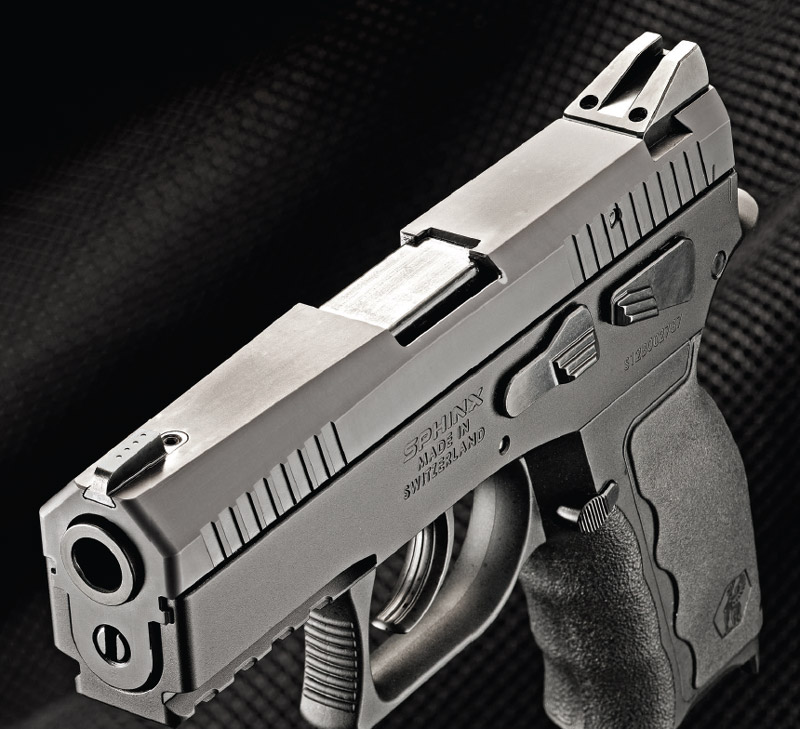
The sphinx is a creature found in both Egyptian and Greek mythology. The Greek version has the head of a woman, the body of a lioness, the wings of an eagle, and the tail of a serpent. The Egyptian version, such as the Great Sphinx of Giza, has a lion body and a human head. With similar creatures from different cultures, could the sphinx have its origin in fact?
The mystery has been solved, and the sphinx does in fact exist. It doesn’t come from the Middle East or the Mediterranean but from Switzerland!
I am talking, of course, about the Sphinx SDP Compact pistol, manufactured by Sphinx Arms and imported by KRISS USA.
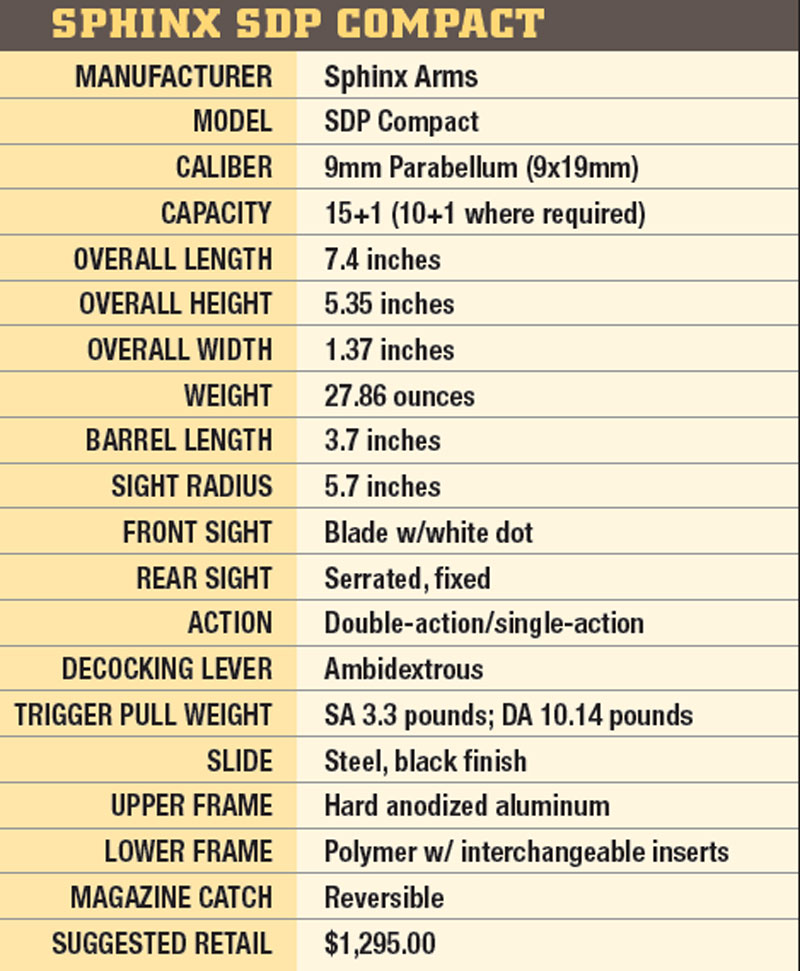
Table of Contents
SPHINX SDP COMPACT
The Sphinx SDP Compact (SDP) is a double-action/single-action pistol chambered for the ubiquitous 9mm Parabellum cartridge. At first glance, the SDP is reminiscent of the CZ-75/Witness pistols. But first glance is where the similarity ends. Let’s start with the frame.
The Sphinx is somewhat untraditional in that it uses a two-piece frame. The upper portion of the frame is hardanodized aluminum. Full-length rails are machined into the upper and feature Teflon® inserts. The lower portion of the SDP’s frame is polymer and has three interchangeable grip sizes, allowing a shooter to find the grip size that works best for him.
A single cross pin holds the grips on the pistol. To change from one grip size to another, drive out the pin and pull the grip from the pistol with the provided removal tool.
The slide is machined from solid steel. The sides of the slide are beveled upward, resulting in a flat-top pyramid shape. There are substantial serrations fore and aft for loading, unloading and performing a loaded chamber verification (press check). Like the CZ-75 and its clones, the rails on the slide run inside the frame instead of on the outside as found on most pistols. This arguably results in better accuracy. The slide is finished with a black TiAIN coating.
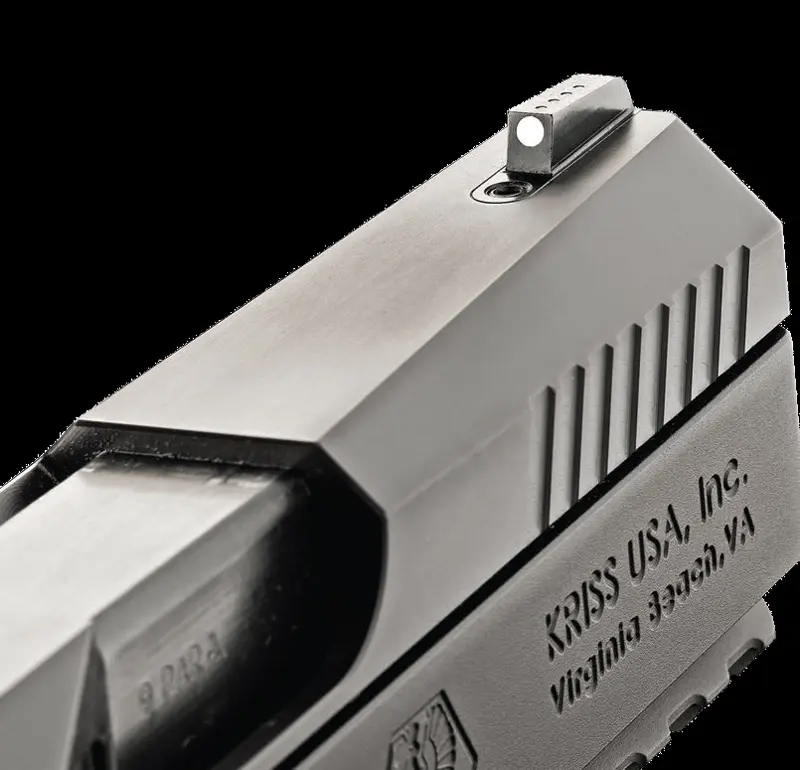
Barrel length is 3.7 inches, and the barrel’s throat on the test pistol was highly polished.
The test pistol had a front sight with single white dot, and the low-profile rear sight had no color whatsoever. I prefer this single white dot with black rear sight to all other combinations.
The rear sight is installed in a standard dovetail and there are two grub screws for keeping the sight securely in place. The rear sight is atypical in that the dovetail it fits in runs longitudinally from the front of the slide instead of across the slide. It also is held in place with a grub screw.
I had no reason to remove the front sight, but if the front sight needs to be replaced, e.g., if it’s damaged from a drop on a hard surface, it may be quite a chore, as I’m not aware of any sightpushing tool that would work. Sight radius is 5.7 inches.
The slide lock, decocker and magazine release are all easily manipulated. The decocker is ambidextrous, while the magazine release button is reversible for southpaws.
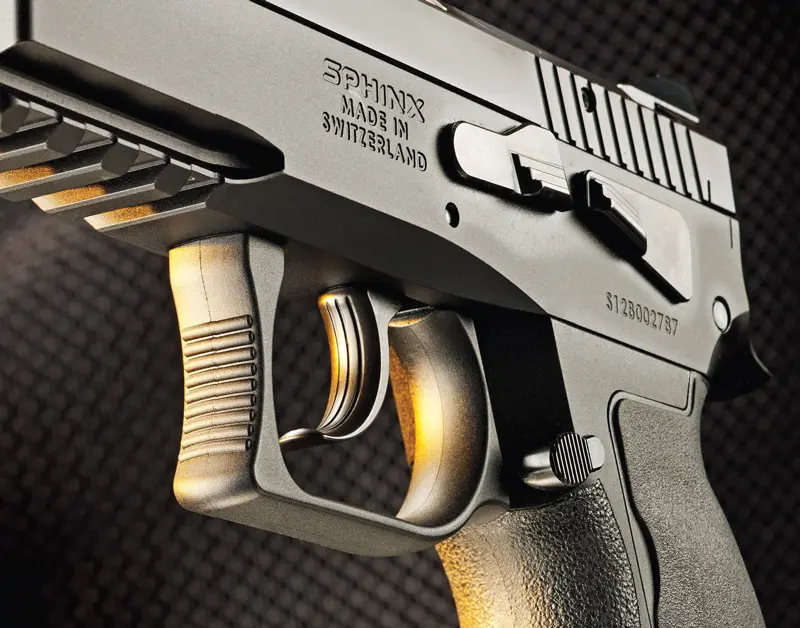
The SDP Compact has four safeties: internal firing pin safety, drop safety, integrated slide position safety, and hammer safety.
A loaded chamber can be verified either tactilely or visually with the SDP’s loaded chamber indicator. If there is enough ambient light, the edge of a chambered round can be seen between the slide and the chamber. In failing light, the chamber indicator can be felt on the forward edge of the extractor with a bare finger. It does not protrude enough to be felt with gloves on.
The Sphinx SDP Compact comes in a fitted hard case and includes the pistol, two magazines, a magazine loader, cleaning kit, grip removal tool, and owner’s manual.
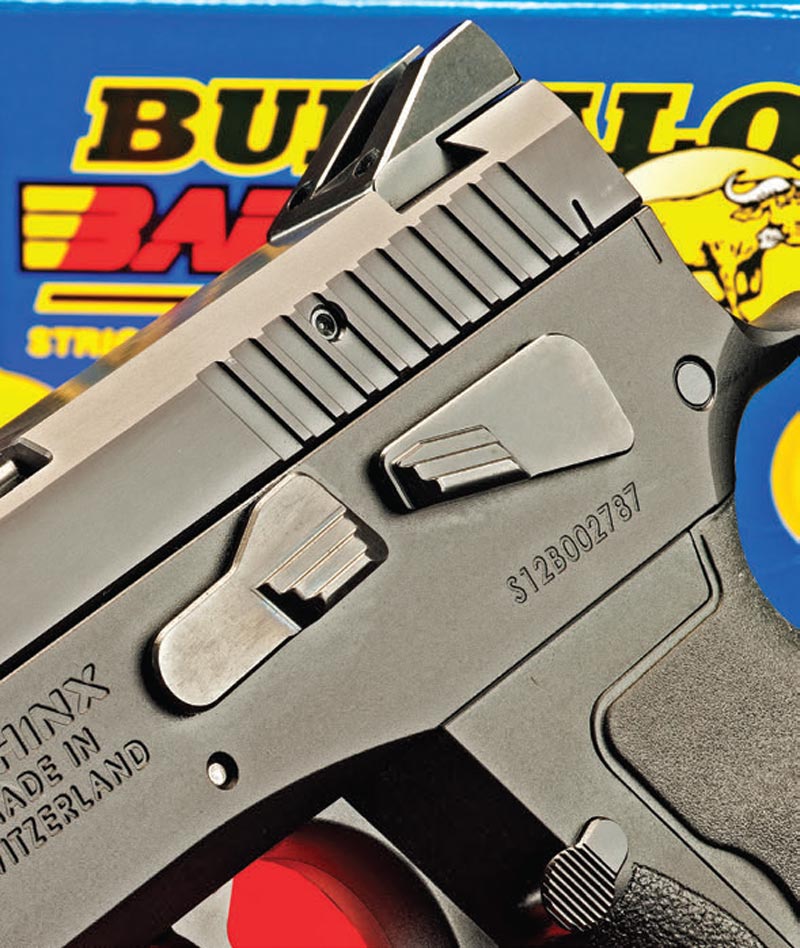
FIELD EVALUATION
Before going to the range, I experimented with the different interchangeable grips. After some trial and error, I found the small grips gave me the most natural point of aim. This is probably because I’m so accustomed to the slim stock panels on my 1911 pistols.
On a side note, the pin to change the grips removes from right to left—opposite that of many firearms. It also takes a fairly hard hit on the punch the first few times, but this is preferred to being too loose and working out while shooting.
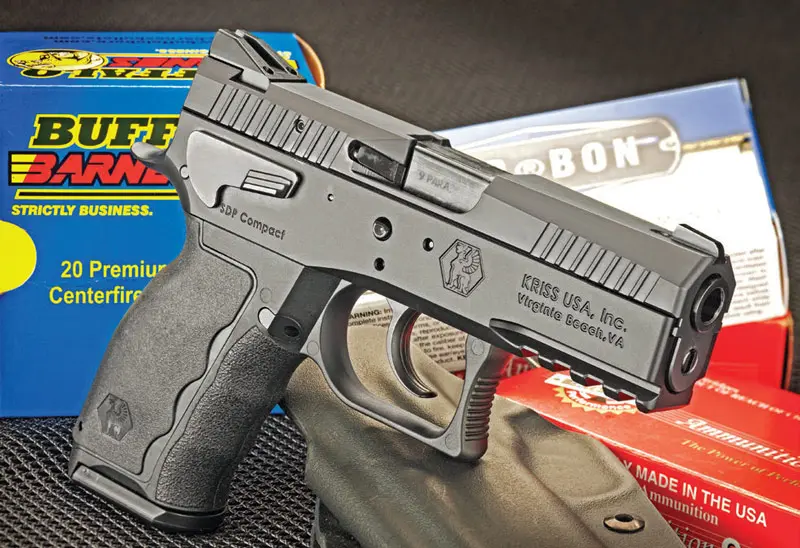
Decocker is ambidextrous.
According to Sphinx’s literature, the single-action (SA) trigger pull should be around 3.3 pounds and the doubleaction (DA) pull a bit more than ten pounds. My RCBS trigger pull gauge showed the SA pull to be 4.1 pounds. After a bit of take-up, the trigger broke cleanly with a small amount of overtravel. The reset was short and positive.
My trigger pull gauge only reads up to eight pounds, so I was unable to get an accurate DA reading, but it’s likely in the ten-pound range. In DA mode, the trigger broke cleanly with no perceptible overtravel.
I took along an assortment of factory 9mm loads with a variety of bullet weights, as well as some handloads. Although a magazine loader is included, I found that I did not have a need for it, as I could fully load a magazine before the spring became too hard to compress easily.
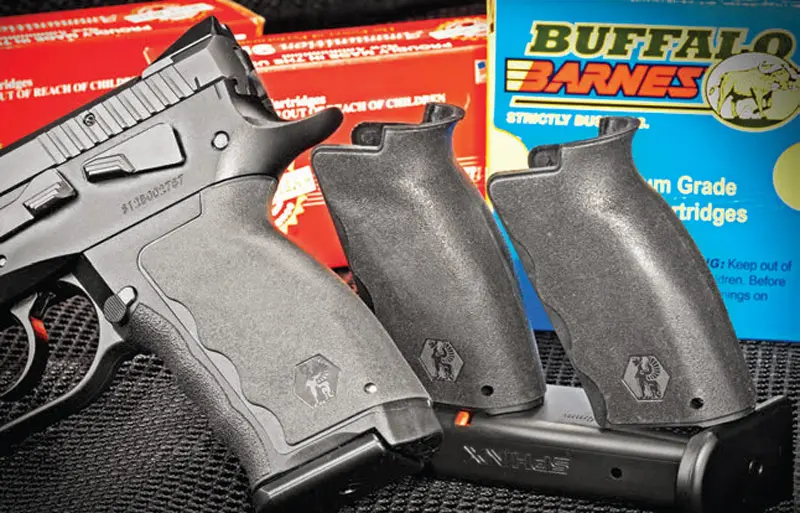
To establish velocity out of the SDP’s 3.7-inch barrel, 15 rounds of each load were chronographed with a PACT Professional model chronograph with the first sensor placed ten feet from the muzzle. Some distance between the first sensor and the muzzle is necessary because if the muzzle blast reaches the first sensor before the bullet, which is likely, the readings may be incorrect or no reading may be produced at all. The truth of the matter is that ten feet from the muzzle is probably less important than other combined factors such as elevation, temperature and humidity.
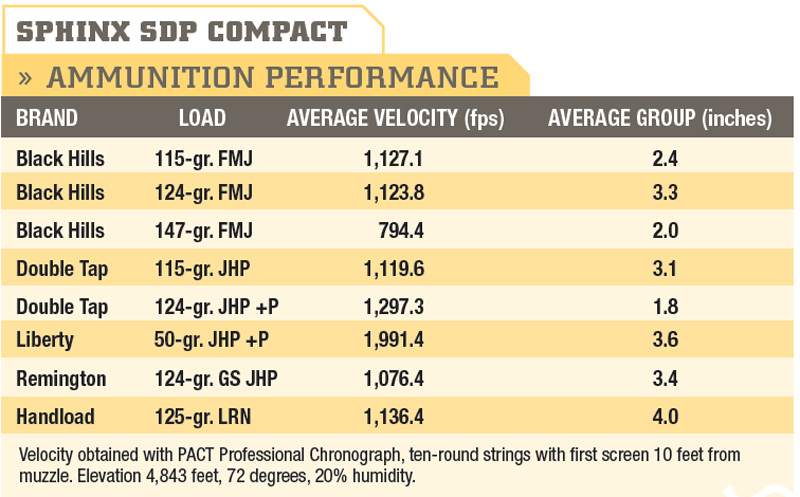
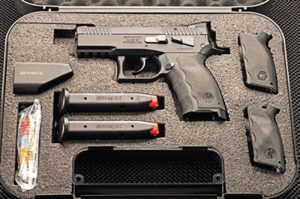
For accuracy, I enlisted the help of my grandson Austin. We both fired the SDP standing without a rest at 45 feet— roughly five times the distance of the “average” defensive shooting. We each fired five rounds of each load in the single-action mode. The groups shown in the accompanying chart are the average of both shooters.
We proceeded to put the Sphinx through its paces by running a multitude of drills. These included shooting and moving, shooting while moving to cover, multiple targets, one hand, and weak hand only.
On one drill, we simulated being attacked while leaving a big-box store with a young child. This drill had the shooter keep his weak hand behind him—to replicate keeping control of the child and shielding him with the shooter’s body—while shooting strong-hand only and moving to cover behind a car (actually a 55-gallon drum).
Because of their relatively light weights, it’s not uncommon for polymer frame guns to not function properly when the shooter is using one hand, especially if it’s the support hand, due to “limp wristing.” I could not make this occur with the Sphinx SDP, even though I purposely held the pistol with a weak grip.
I experienced four malfunctions of the same type during the evaluation: failure to lock the slide back after the last round was fired. Each of these stoppages was with Liberty Ammunition’s very light-recoiling 50-grain hollow points. Frankly, after sending 16 rounds downrange, I don’t consider not locking the slide a big deal. YMMV.
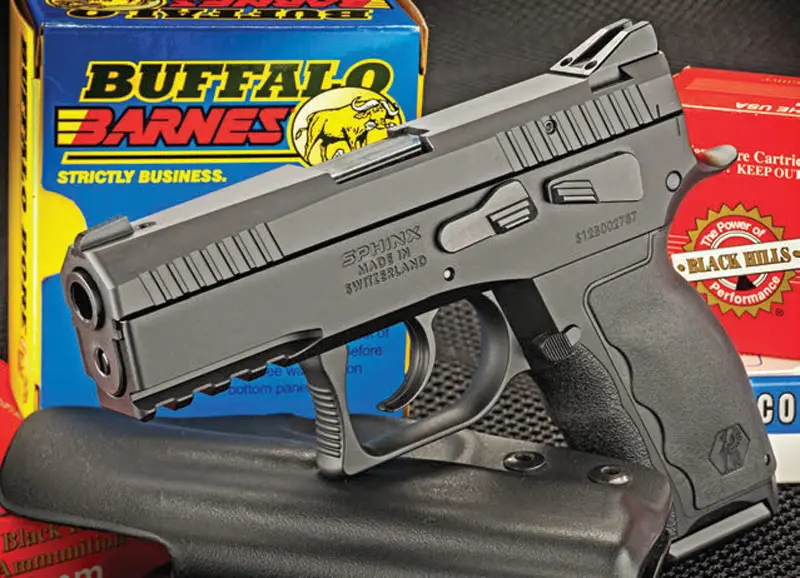
CONCLUSION
Usually I can find one or two things about a firearm I don’t like or would change. I can’t find anything on the Sphinx I would modify. The term “Swiss precision” is sometimes overused, but in this case, it holds true.
Suggested retail price of the Sphinx SDP is $1,295. Actual street price will probably be at or slightly less than $1,000.
